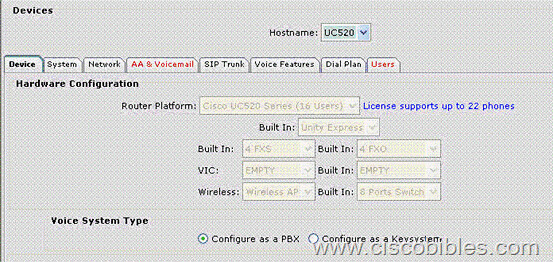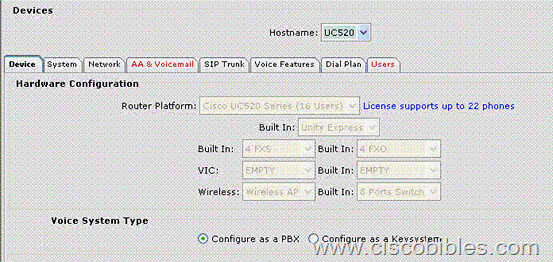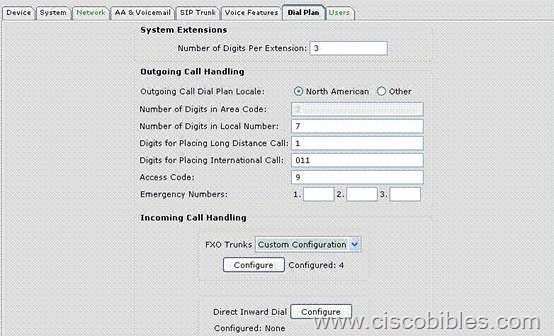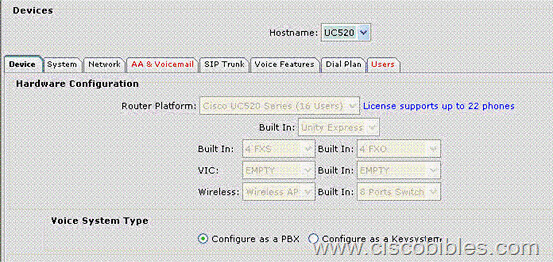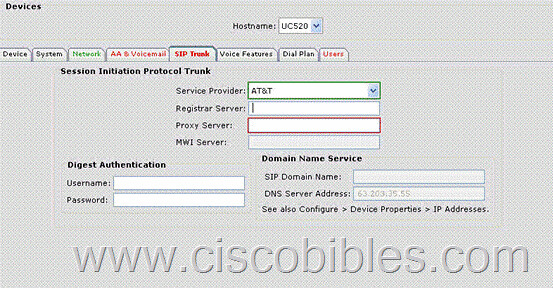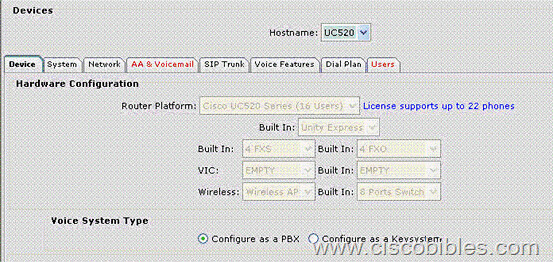|
This page was exported from Free Cisco Training & Resources - Certification Exam Preparation
[ https://www.ciscobibles.com ] Export date: Tue Nov 18 22:25:19 2025 / +0000 GMT |
CCNA Voice Bible (640-460) – Cisco UC500 Series & CCAQuestion 1 Benson's Able Messenger Service wants to install a new UC500 solution. Which four of these provide information from the existing numbering plan that helps you design an effective VoIP dial plan? (Choose four) A. Station number Answer: A C D E Question 2 A customer wants to use a signaling protocol on the voice gateways that require registration with the Cisco Unified Communications Manager. What protocol should be recommended? A. SIP Answer: D Question 3 Refer to the exhibit.
After deploying a UC500 system, you receive a support call from a user reporting that callers are going straight to the operator instead of going to members of the hunt group. Which two tabs have configuration parameters that are most likely going to resolve this issue? (Choose two) A. Device Answer: E F Question 4 Refer to the exhibit.
You have been asked to verify the network configuration that was performed by a colleague. Which of the following conclusions would be accurate? A. The voice VLAN should always start with VLAN 1. Answer: D Question 5 Refer to the exhibit.
What is the purpose of access code 9? A. This access code connects a caller to the operator when they press 9 on their phone keypad. Answer: C Question 6 Refer to the exhibit.
Which statement is true about the VLAN Number field? A. You can create a new voice VLAN as long as it falls in the range 1 to 1001. Answer: D Question 7 Refer to the exhibit.
Based on this configuration, how will an incoming call to 503 be routed? A. The call will be routed to extension 503 and then sequentially to hunt groups 1 and 2. Answer: C Question 8 Refer to the exhibit.
What is the difference between a PBX and a keysystem under the Device tab? A. A PBX is where each phone has nearly identical configuration whereas a keysystem has a unique extension for each phone. Answer: B Question 9 Which three options can be configured using Cisco Configuration Assistant? (Choose three) A. Voice VLAN only Answer: B C D Question 10 Refer to the exhibit.
A. A SIP trunk configuration is always needed for a UC500 device. Answer: E F Question 11 Refer to the exhibit.
You have created a new voice VLAN 110 and would like to reassign the IP phones to the new voice VLAN. The IP phones currently reside in the default voice VLAN 100. Which tab allows you to reassign the IP phones? A. Device Answer: C Question 12 Which option cannot be configured using Cisco Configuration Assistant? A. voice VLAN only Answer: A Question 13 Please describe the Cisco Unity Express default AutoAttendant A. The default AA must be enabled during the Initialization Wizard process Answer: B |
|
Post date: 2010-07-10 18:02:10 Post date GMT: 2010-07-10 10:02:10 Post modified date: 2010-07-10 18:02:10 Post modified date GMT: 2010-07-10 10:02:10 |
| Powered by [ Universal Post Manager ] plugin. HTML saving format developed by gVectors Team www.gVectors.com |
